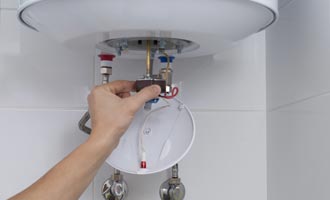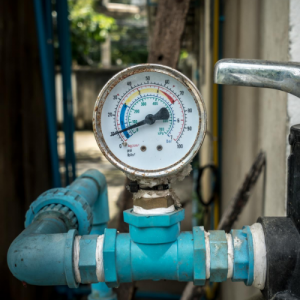Confirmed Methods for Resolving Low Water Pressure in Your Home
Confirmed Methods for Resolving Low Water Pressure in Your Home
Blog Article
Right here underneath you will discover some outstanding points pertaining to Low Water Pressure in the House?.

Low water pressure in your house can be an irritating trouble, affecting everything from showering to cleaning dishes. If you're experiencing weak water flow, there are a number of feasible reasons and options to explore. In this overview, we'll go over common reasons for low tide pressure and useful steps to address the problem successfully.
Introduction to Low Tide Stress
Low tide pressure takes place when the circulation of water from your taps, showers, and other components is weaker than usual. This can make day-to-day jobs extra difficult and much less reliable. Understanding the root causes of low tide stress is critical to finding the ideal solution.
Typical Sources Of Low Water Pressure
Pipe Obstructions
Gradually, pipelines can end up being clogged with mineral deposits, debris, or debris, limiting the circulation of water. This is an usual problem in older homes with galvanized steel pipes.
Corrosion
Deterioration within pipes can result in leakages and decreased water stress. Corrosion accumulation can tighten water circulation, especially in maturing plumbing systems.
Faulty Pressure Regulators
Stress regulators are accountable for maintaining constant water stress in your house. If they malfunction, it can result in low tide pressure or uneven circulation throughout your home.
Community Supply Of Water Issues
In some cases, the issue lies outside your home. Community water issues, such as main line leakages or upkeep job, can temporarily minimize water stress in your area.
How to Detect Low Tide Pressure
Inspecting Taps and Fixtures
Start by examining the water pressure at different faucets and fixtures throughout your home. If the problem is separated to details areas, it might show localized issues.
Evaluating Pipelines
Inspect visible pipelines for indications of leaks, deterioration, or obstructions. Take notice of any unusual noises, such as knocking or rattling pipes, which could show issues within the plumbing system.
Consulting with a Plumber
If you're not able to identify the cause of low water pressure, think about employing a specialist plumber to conduct a comprehensive inspection. They can recognize underlying problems and advise ideal remedies.
Do It Yourself Solutions to Take Care Of Low Water Pressure
Cleansing Aerators and Showerheads
Mineral deposits can collect in aerators and showerheads, lowering water flow. Eliminate and clean up these components regularly to boost water stress.
Flushing Hot Water Heater
Sediment build-up in the water heater can restrict flow and reduce effectiveness. Purging the container occasionally assists eliminate debris and keep optimum efficiency.
Checking Pressure Regulatory Authority
Make certain that the stress regulatory authority is operating properly. Readjusting or changing the regulatory authority can assist restore proper water stress throughout your home.
Cleaning Clogs in Water Lines
For minor clogs, attempt utilizing a plumbing serpent or chemical drain cleaner to clear blockages in pipes. Beware when utilizing chemicals and follow security guidelines.
When to Call an Expert Plumber
If DIY efforts fail to settle the issue or if you presume substantial plumbing troubles, it's best to look for help from a certified plumber. They have the experience and devices to resolve intricate problems securely and successfully.
Preventive Measures to Preserve Water Pressure
Routine Maintenance
Arrange regular maintenance for your plumbing system to stop issues such as deterioration, leakages, and blockages. Dealing with small issues early can help prevent more considerable repair work later on.
Mounting a Pressure Booster
Think about setting up a stress booster pump to improve water stress in locations with constantly low flow. This can be particularly beneficial for multi-story homes or residential properties with high-demand fixtures.
Surveillance Water Usage
Be mindful of water use routines and avoid overtaxing the plumbing system. Simple changes, such as staggering showers and washing lots, can help keep ample water pressure.
Final thought
Taking care of low water pressure can be aggravating, but identifying the underlying causes and carrying out suitable services can restore optimal flow throughout your home. Whether it's cleaning up aerators, inspecting pipes, or speaking with a plumber, taking aggressive actions can guarantee a constant supply of water for your everyday needs.
FOUR WAYS TO FIX LOW WATER PRESSURE NOW
Turning on a shower or faucet only to find the water comes out in a sad, slow drizzle is never a good feeling. How exactly are you supposed to wash a pan or take a quick shower when it takes 10 minutes just to rinse off a little soap? The good news is that when your water pressure is bad, there's always a cause: typically one that can be easily fixed. Here are some of the most common causes of low pressure and what you can do to fix the issue:
DEBRIS AND MINERAL DEPOSIT BUILDUPS
If you notice low water pressure from just one or two of the fixtures in your house, the problem likely has to do with debris buildup. Water is full of minerals and other debris, all of which can accumulate in your pipes and on your fixtures. This can cause a blockage that affects how much water flows through. To fix this, try filling a small plastic bag with white vinegar, and use a rubber band to hang it around your showerhead or faucet. Let the head of the fixture soak for a few hours, and the vinegar should loosen the deposits.
WATER LEAKS
Leaks are another common cause of low water pressure. If water is flowing out of your plumbing through a hole or crack before it can reach your fixture, the pressure coming out of the faucet or showerhead will be lower. A plumbing professional is your best bet for finding and repairing a leak in your water supply pipes.
Leaks are another common cause of low water pressure. If water is flowing out of your plumbing through a hole or crack before it can reach your fixture, the pressure coming out of the faucet or showerhead will be lower. A plumbing professional is your best bet for finding and repairing a leak in your water supply pipes.
FOUR WAYS TO FIX LOW WATER PRESSURE NOW
Turning on a shower or faucet only to find the water comes out in a sad, slow drizzle is never a good feeling. How exactly are you supposed to wash a pan or take a quick shower when it takes 10 minutes just to rinse off a little soap? The good news is that when your water pressure is bad, there's always a cause: typically one that can be easily fixed. Here are some of the most common causes of low pressure and what you can do to fix the issue:
DEBRIS AND MINERAL DEPOSIT BUILDUPS
If you notice low water pressure from just one or two of the fixtures in your house, the problem likely has to do with debris buildup. Water is full of minerals and other debris, all of which can accumulate in your pipes and on your fixtures. This can cause a blockage that affects how much water flows through. To fix this, try filling a small plastic bag with white vinegar, and use a rubber band to hang it around your showerhead or faucet. Let the head of the fixture soak for a few hours, and the vinegar should loosen the deposits.
WATER LEAKS
Leaks are another common cause of low water pressure. If water is flowing out of your plumbing through a hole or crack before it can reach your fixture, the pressure coming out of the faucet or showerhead will be lower. A plumbing professional is your best bet for finding and repairing a leak in your water supply pipes.
Leaks are another common cause of low water pressure. If water is flowing out of your plumbing through a hole or crack before it can reach your fixture, the pressure coming out of the faucet or showerhead will be lower. A plumbing professional is your best bet for finding and repairing a leak in your water supply pipes.
A VALVE ISSUE
If you have low water pressure throughout your home, check your main shut-off valve to make sure it's completely open. You may also want to see if there's a pressure-reducing valve installed. If there is, have a plumber help you adjust the settings to get the pressure you're looking for.
OTHERS USING WATER
Believe it or not, your low water pressure could be caused by your neighbors. If you notice low pressure at certain times of day, it may be because you and the people living next to you have similar schedules - when everyone is showering at the same time, the pressure will be lower in every home. Low pressure throughout the neighborhood may also be caused by an issue with your municipal water supply. If that's the case, call the supplier to see if they're working on the issue.
https://www.rotorooter.com/blog/water-leaking/low-water-pressure-fixes/

As an avid person who reads on 10 Reasons for Low Water Pressure in Your House, I was thinking sharing that excerpt was really helpful. Are you aware of someone else who is enthusiastic about Low Water Pressure in the House?? Please feel free to share it. I recognize the value of reading our article about 4 Ways to Troubleshoot Low Water Pressure.
Give Me A Quote! Report this page